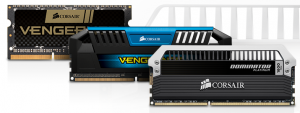 DDR4 SDRAM which means in computing world for Double Data Rate Fourth Generation Synchronous Dynamic Random-Access Memory was released for public purchase during the second quarter of 2014. It is the higher version of the DDR3 but with a lesser voltage requirement of only 1.2 volts. Compared to DDR3’s 1.5 V, it operates a frequency ranging from 1600 to 3200 MHz and it also has a higher data rate transfer than its previous versions.
DDR4 SDRAM which means in computing world for Double Data Rate Fourth Generation Synchronous Dynamic Random-Access Memory was released for public purchase during the second quarter of 2014. It is the higher version of the DDR3 but with a lesser voltage requirement of only 1.2 volts. Compared to DDR3’s 1.5 V, it operates a frequency ranging from 1600 to 3200 MHz and it also has a higher data rate transfer than its previous versions.
The production of DDR4 was presumably an ambitious undertaking. In its first pilot release in 2013 it was predicted to gather around 5% of the overall DRAM market and by 2015, adoption may reach about 50%. Unfortunately, its full release in the market only began this year (2014) so even its complete release has started to come true, the expectations is now not high as before and this because with the development of the DDR5 which is expected to emerge in 2016.
Moreover, the computing community that has anticipated on the dawn of the DDR4 was not disappointed. The DDR4 boasts of its lower power requirements which correspond to less waste heat. Its faster data transfer also support power-down mode that can reduce standby power consumption between 40 to 50 percent on desktops. For the host devices these can now shift to standby mode with no need for memory refresh.
What to Expect
When used on servers and laptops, we can expect that our batteries can last a little longer because of lesser power use with the DDR4. Especially with the servers that run 24 hours a day, these can use terabytes of memory but with the DDR4 there will be less use of onboard fans and ventilation system which translates to lesser power bill. At most, with any gadget that will be installed with the DDR4, we can expect at least 20 percent reduction in power use. Especially with the desktop where the LCD eats most of the power juice followed by the CPU, the DDR4 can eventually easen up power consumption significantly.
Gadgets that commonly have smaller memories like smartphones and tablets that use their displays and eat too much energy will also get some advantage from the DDR4 memory. Right now, Qualcomm has also produced its Snapdragon 810 mobile processors that were also installed with low-power use DDR4 memory. Many more devices are expected to follow through around the 2nd quarter of 2015.
The Cost and the Catch
We now see on the market DDR3 memory that are up to 2 GB particularly for notebooks and desktops but now we begin to see 4 GB up to 8 GB for the DDR4. With the more advanced servers we also expect to see DDR4 DIMM that could produce 64 to 128 GB memory. So if ever there comes out the DDR4 with large memory capacity, don’t get surprised if these are a bit expensive. A 16 GB DDR3 memory today can cost $140 so a 16 GB DDR4 memory could have almost twice amount because you get a lot of advancement from it compared to DDR3.
There is also one catch with the investment of DDR4. If you upgrade your memory that means you also have to upgrade your motherboard as new chipset may be necessary. But good thing Intel is now coming up with X99 chipset that is compatible with DDR4 memory and also the new Extreme Edition Haswell’s CPU.